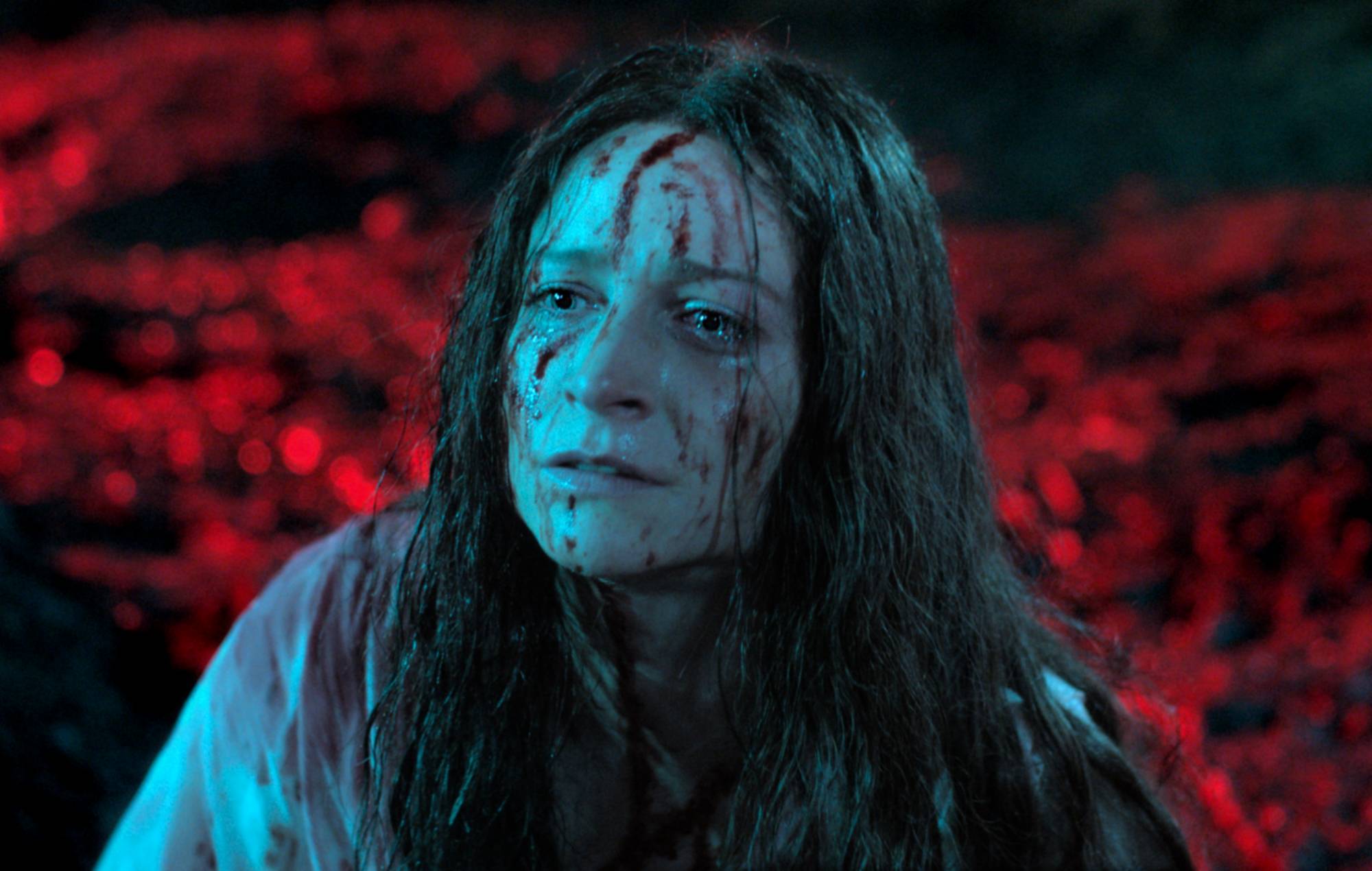
First-time feature director Prano Bailey-Bond makes an incredibly confident horror debut with a film that’s packed with ideas, unforgettable images, and thrums with a love for the genre. Censor is set in 1985, when Margaret Thatcher was in power, the country was in turmoil, and ‘Video Nasties’ were making the nation panic that anybody could become a murderer if they happened to watch the wrong movie. The Video Nasties were a group of horror movies so named because their content – extreme violence, gore, graphic sex – was considered too corrupting for public eyes, so they were duly refused certification by the BBFC. The country had a genuine fear that horror could inspire copycat killings. It was up to the censors to protect us. The film centres on one such censor. If film can corrupt us, Bailey-Bond asks, why wouldn’t it corrupt them?
Niam Algar plays Enid, a quiet and seemingly calm woman who takes her job as a censor very seriously. She sits, unruffled, as she watches horrible movies, noting when violence is simply “too realistic” or images too vile. She treats it all with a level head. But it’s almost immediately obvious that Enid’s lack of outward emotion isn’t telling the whole story. Just the way she repeatedly cracks her shoulders says this is a woman carrying some stress.

Enid is very far from relaxed. She is consumed by guilt over the loss of her sister, who disappeared when they were children. Enid was the last person to see her alive and can’t fully recall what happened on the day she went missing. While Enid’s parents have grieved and moved on, Enid is convinced her sister is out there somewhere. When Enid comes across a film that seems to directly echo everything she recalls of her sister’s disappearance, she determines to track down its secretive director in the hope of getting some answers. As she gets deeper into her quest, Enid’s grasp on what’s real and what’s fantasy begins to slip. Her life becomes the greatest horror she’s ever encountered.
Bailey-Bond’s style suggests someone steeped in horror, though it never feels like pastiche or rip-off. There are flavours of Dario Argento, Sam Raimi, John Carpenter, Hideo Nakata and Tobe Hooper, blended together to create something that feels familiar but unsettling, like a remembered nightmare. She keeps areas of deep shadow in her frame, so there’s often the sense of danger lurking. There are shots that have the slight grain of VHS, background crackle and hiss of projection, but it’s all incorporated in such a subtle way that you barely notice it. The effect is that you’re always on edge, just a little aware that something’s not right. This isn’t a horror in the sense that there’s much horrific happening on screen, though there is the odd rush of gore, but it’s horror because it haunts you.

Niamh Algar, who was BAFTA nominated last year for Calm With Horses, is star-making as Enid. The film asks her to go to some very strange places and she strides in fearlessly. In her hands, Enid is a heartbreaking figure who can’t escape her own mind.
As a first film, this is astonishingly assured. Bailey-Bond plays with big psychological questions like a cat playing with a trapped bird. Can horror distort our minds or does a distorted mind simply find horror that fits it? Is there anything more dangerous than our own darkest thoughts? Bailey-Bond isn’t trying to answer anything, only ask. She drags Enid and her audience to hell as she plays with her ideas, and it’s a dark pleasure to go with her.
Details
- Director: Prano Bailey-Bond
- Starring: Niamh Algar, Michael Smiley, Vincent Franklin
- Release date: August 20


